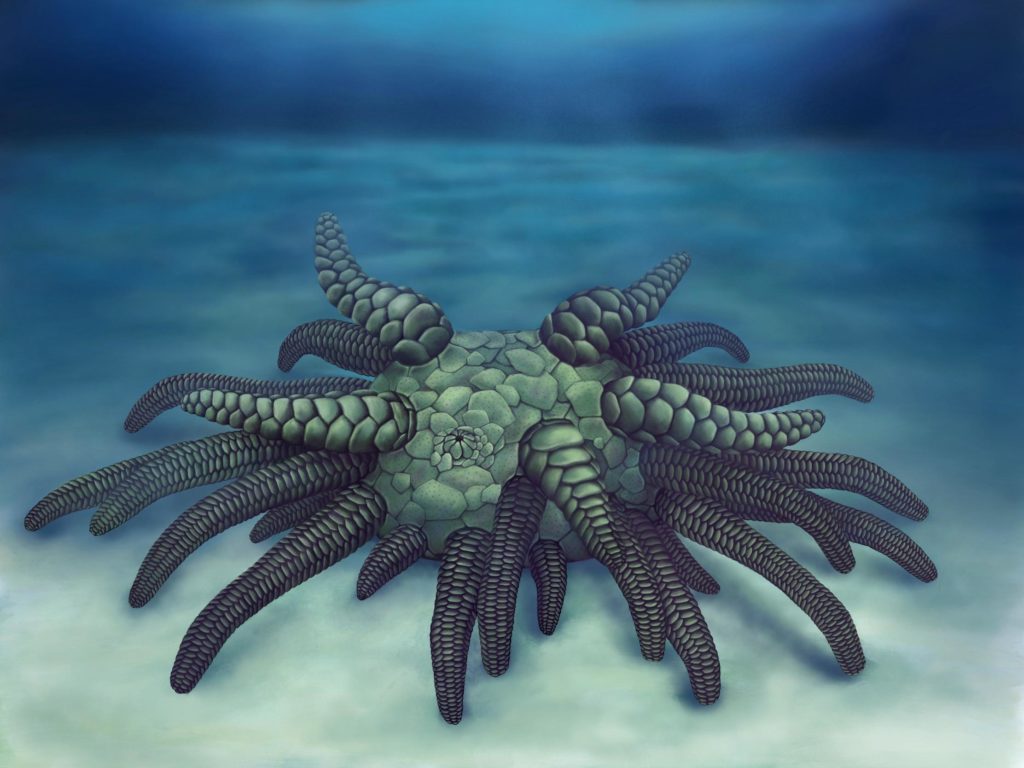@WFS,World Fossil Society,Riffin T Sajeev,Russel T Sajeev

Artist’s reconstruction of Sollasina cthulhu ( Elissa Martin, Yale Peabody Museum of Natural History )
An incredibly well-preserved fossil unearthed in Herefordshire has been named after a hideous creature from fiction: Sollasina cthulhu.
Although no larger than 3cm wide, its array of tentacles reminded the team who discovered it of the monster Cthulhu created by American author H.P. Lovecraft. A gigantic entity worshipped by cultists, the writer describes its appearance is described as looking like an octopus, a dragon, and a caricature of human form.
The fossil meanwhile, is thought to be a relative of tube-shaped sea cucumbers and spiny sea urchins still alive today. Scientists from both Oxford University and University College London said their “monstrous” new discovery provides new insights into the evolution of this group.
“We carried out a number of analyses to work out whether Sollasina was more closely related to sea cucumbers or sea urchins. To our surprise, the results suggest it was an ancient sea cucumber,” said Dr Jeffrey Thompson. “This helps us understand the changes that occurred during the early evolution of the group, which ultimately gave rise to the slug-like forms we see today.”
Publishing their findings in the journal Proceedings of the Royal Society B, the scientists said that like its descendants that still crawl along the ocean floor today, their specimen would have used its tentacles to shift itself around and catch food.
The excellent preservation of the creature’s soft tissues even captured elements of the hydraulic system that this group of animals use to manoeuvre themselves around.
“Sollasina belongs to an extinct group called the ophiocistioids, and this new material provides the first information on the group’s internal structures,” said Dr Imran Rahman from the University of Oxford, who led the study. “This includes an inner ring-like form that has never been described in the group before. We interpret this as the first evidence of the soft parts of the water vascular system in ophiocistioids.”
Within this system, modern starfish, sea cucumbers and sea urchins have a system of canals connecting their numerous tube feet. They then move by contracting muscles and forcing water around the canals.
Source: Josh Gabbatiss,Science Correspondent,Independent.
@WFS,World Fossil Society,Riffin T Sajeev,Russel T Sajeev



 April 10th, 2019
April 10th, 2019  Riffin
Riffin  Posted in
Posted in  Tags:
Tags: 